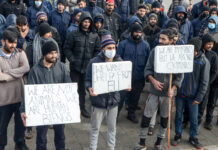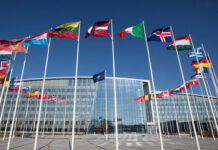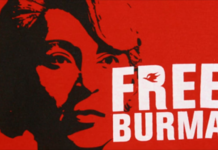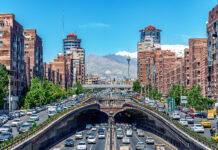Latest developments
On October 7, 2023, with the “Al-Aqsa Floods” operation, the Palestinian movement Hamas conducted a large-scale attack, catching Israeli intelligence and security forces off guard. On the deadliest day for Jews since the Holocaust and in the gravest attack in Israel’s history, over 1,400 Israelis (mostly civilians) were killed, about 2,500 were injured, while 240 people (including women and children) were taken hostage and brought into the Gaza Strip. Israel’s retaliation was unprecedented. In just the first week of aerial bombardments, the Israeli Air Force dropped 6,000 bombs on the Palestinian enclave controlled by Hamas since 2007: in Afghanistan, in 2018 and 2019, the United States had used 7,000 bombs per year.
Following the aerial campaign, on October 27, ground troops took action: it was the first time since the 2014 “Operation Protective Edge” that the Israeli army entered the world’s largest open-air prison (41 kilometers long by 8 kilometers wide, with over 2 million inhabitants). If from January to October 2023 all ongoing wars in the world had caused, according to estimates, 14,908 civilian casualties, in just one month of Israeli bombardments on the Gaza Strip, there were 10,022 deaths (an average of one child every 10 minutes), 25,408 injured, and over 1.5 million displaced. These are unprecedented and unparalleled numbers, leading the United Nations and several international organizations to accuse Israel of disproportionate use of force, suggesting the commission of war crimes, particularly for the attacks on civilian infrastructure (such as hospitals), complete closure of access crossings, and suspension of water and electricity supply.
While the focus of the international community has been on the Gaza Strip, according to a Peace Now report in the West Bank since October 7, settlers have made threats and attacks on Palestinian communities, armed incursions, punitive expeditions, and pressure to expel hundreds of residents from remote rural areas. Even before this escalation in the conflict, 2023 had been one of the worst years for the West Bank, occupied by Israel since 1948. In July, the Israeli army conducted a military incursion with airstrikes and ground troops in the Jenin refugee camp, an operation not seen since the Second Intifada (2000-2005).
What are they fighting for
Two peoples, in conflict since the late 1930s for the same land: a small strip of the Middle East where approximately 12 million Arabs and over 9 million people reside in the State of Israel. After the end of British colonialism in Palestine and the significant Jewish immigration during the British mandate, in 1948 the UN approved Resolution 181 with a plan to partition that territory: two states, one Jewish (55% of the territory, also hosting 400,000 Palestinians) and the other Arab (almost entirely Muslim), with Jerusalem under international control. Accepted by the Jews, the UN decision was rejected by the Palestinians. On May 14, 1948, as soon as the British definitively withdrew, the Jews declared the independence of the State of Israel (recognized by several countries) and war broke out. Alongside the Palestinians were the neighboring states of the Arab League. The conflict lasted for a year. Israel prevailed, and following various armistices (but no peace agreements), it seized the first territories not provided for by the UN resolution, including West Jerusalem. The scenario repeated itself in 1967, and after the Six-Day War against Egypt, Israel occupied additional areas, building new settlements. The Palestinians’ struggle for their land has seen various escalations, such as the two Intifadas of 1987 and 2000. The UN has repeatedly called on Israel to respect the borders and stop the construction of new settlements in the occupied territories.
Country overview
With the dissolution of the Ottoman Empire at the end of World War I, the colonial powers redistributed the Middle East, dividing those territories among themselves. Palestine went to the British, who governed it from 1920 to 1948, already expressing their support in 1917 for the creation of a Jewish state. A new political movement, Zionism, called for the return to Palestine, the “promised land” of the Bible. The rise of fascist regimes in Europe intensified Jewish emigration to that territory, and between 1936 and 1939, a major revolt erupted, suppressed by the British. Through the so-called “White Paper,” the United Kingdom subsequently limited the number of Jews allowed to enter Palestine.
At the end of World War II, after the Holocaust, the Zionist cause strengthened, and immigration resumed. With Operation Aliyah Bet (Second Immigration), Jews were brought from refugee camps to Mediterranean ports and embarked on ships bound for Palestine. In 1948, UN Resolution 181 ended the British mandate in Palestine, establishing the birth of two states: one Jewish and the other Palestinian. Only Israel was born, and through various wars and military operations, it began to occupy Palestinian lands, building new settlements for settlers.
Old documents declassified in recent years reveal that with the 1967 Six-Day War against Egypt, Tel Aviv had devised plans to manage the “securely” captured territories, given the significant superiority of its armed forces. In the West Bank, there was a population of one million Arabs at that time. The few Jews who had settled there before the foundation of the State of Israel were expelled or forced to flee, the same fate that later befell hundreds of thousands of Palestinians in the territories conquered by the Israeli army. Today, almost half a million Jews live in 132 settlements officially recognized and in over 120 illegal outposts. According to the UN Security Council, the International Court of Justice in The Hague, the European Union, Amnesty International, and Human Rights Watch, the settlements are a violation of international law. At the same time, the Fourth Geneva Convention stipulates that “the occupying power may not deport or transfer part of its civilian population to the territory it occupies.”
The First Intifada in 1987, a Palestinian uprising that began in the Gaza Strip and then spread to the West Bank, brought the issue to the forefront. A step towards Israel’s acceptance of a Palestinian state occurred with the Oslo Accords of 1993, signed on the White House lawn by Israeli Prime Minister Yitzhak Rabin, Israeli Foreign Minister Shimon Peres, and, for the Palestine Liberation Organization (PLO), its historic leader Yasser Arafat. Thus, the Palestinian National Authority (PNA) was born, with Arafat and other leaders returning from exile. On November 4, 1995, at the end of a demonstration in favor of the Oslo Accords, then-Israeli Prime Minister Rabin was assassinated by Yigal Amir, a young extremist Jewish settler. The Israeli center-right, led by future Prime Ministers Ariel Sharon and Benjamin Netanyahu, mobilized against the agreement and the “traitorous” Labor Party.
After a controversial visit by Sharon to the Temple Mount, a holy site for both Muslims and Jews, the Second Intifada broke out (September 2000). Considered a hawk, elected prime minister, Sharon declared himself ready to resume negotiations and in 2003 stated that “the occupation of Palestinian territories could not continue indefinitely.” With Arafat’s death a year later, Sharon decided on the Israeli unilateral withdrawal from Gaza. The end of the military occupation and Israeli settlements in the Strip consolidated the image of Hamas (a Palestinian paramilitary organization rivaling the PNA), which won the elections in 2007 and has governed that enclave since then. Israel’s response was swift, with heavy restrictions on the free movement of people and goods to and from the Strip. Meanwhile, in the West Bank, the PNA, supported by the international community, lost credibility: considered by many as corrupt and serving Israel, it has repeatedly postponed political elections for fear (justified) of a Hamas victory. Since December 2022, Benjamin Netanyahu has been the Prime Minister of Israel, leading the most right-wing government in Israel’s history.
Key figure or organization – Wael Al-Dahdouh
On October 25, 2023, Wael Al-Dahdouh, head journalist of the Gaza office of the Al Jazeera broadcaster, was reporting live on the effects of Israeli airstrikes on the Strip when he learned that his wife and two children (aged 15 and 7) had been killed in an Israeli airstrike. Al-Dahdouh’s family was located in the Nuseirat refugee camp after being displaced from the northern part of the Strip due to fear of the imminent Israeli army invasion at the time. The broadcaster later aired footage of Al-Dahdouh at the Al-Aqsa Martyrs Hospital in Deir al-Balah, for the identification of the bodies at the morgue. During Operation “Swords of Iron,” Israel did not allow journalists access to the Strip, and by November 20, 2023, there were 48 reporters killed, the deadliest month since the Committee to Protect Journalists (CPJ) began collecting data in 1992.
FOCUS 1 – Hamas
Hamas, the Islamic Resistance Movement, is a Palestinian Sunni Islamic fundamentalist political movement founded in 1987 by Sheikh Ahmad Yassin. Hamas’s 1988 Charter proposes the return of Palestine to its pre-colonial condition and the establishment of a Palestinian state, denying the existence of Israel as that land cannot be ceded to non-Muslims. Financed, armed, and trained by Iran, Hamas considers the holy war for Palestine a religious duty for every Palestinian Muslim. Through its armed wing, the Izz ad-Din al-Qassam Brigades, which reportedly have about 20,000 fighters, Hamas has been engaged in armed struggle against Israel for over 30 years. Considered a terrorist organization by dozens of countries, including the United States, the United Kingdom, and the European Union, Hamas has committed and claimed responsibility for numerous suicide bombings against Israeli civilians and military personnel. Since 2001, it has repeatedly attacked Israel with rockets, being accused by Human Rights Watch of war crimes and crimes against humanity. Since winning administrative elections in 2006, Hamas has controlled the Gaza Strip. Since 2017, while distancing itself from the Muslim Brotherhood, it has accepted the delineation of Palestine within the 1967 borders without recognizing the Jewish state.
FOCUS 2 – The financiers of Hamas
The main supporters of Hamas have been Syria and Iran. At the beginning of 2012, the leaders of the Palestinian movement publicly declared their support for the Syrian opposition, leaving Damascus for Egypt and Qatar. In 2013, with the overthrow of the Egyptian government of the Muslim Brotherhood (Mohamed Morsi) by General al-Sisi (hostile to Hamas), the passage of goods through the Rafah crossing was severely limited, and the smuggling tunnels, until then an important source of funding for the movement, were also closed. In 2018, the Palestinian Authority cut funding to the Gaza Strip, but Hamas survived thanks to funding from Qatar and Iran.


















